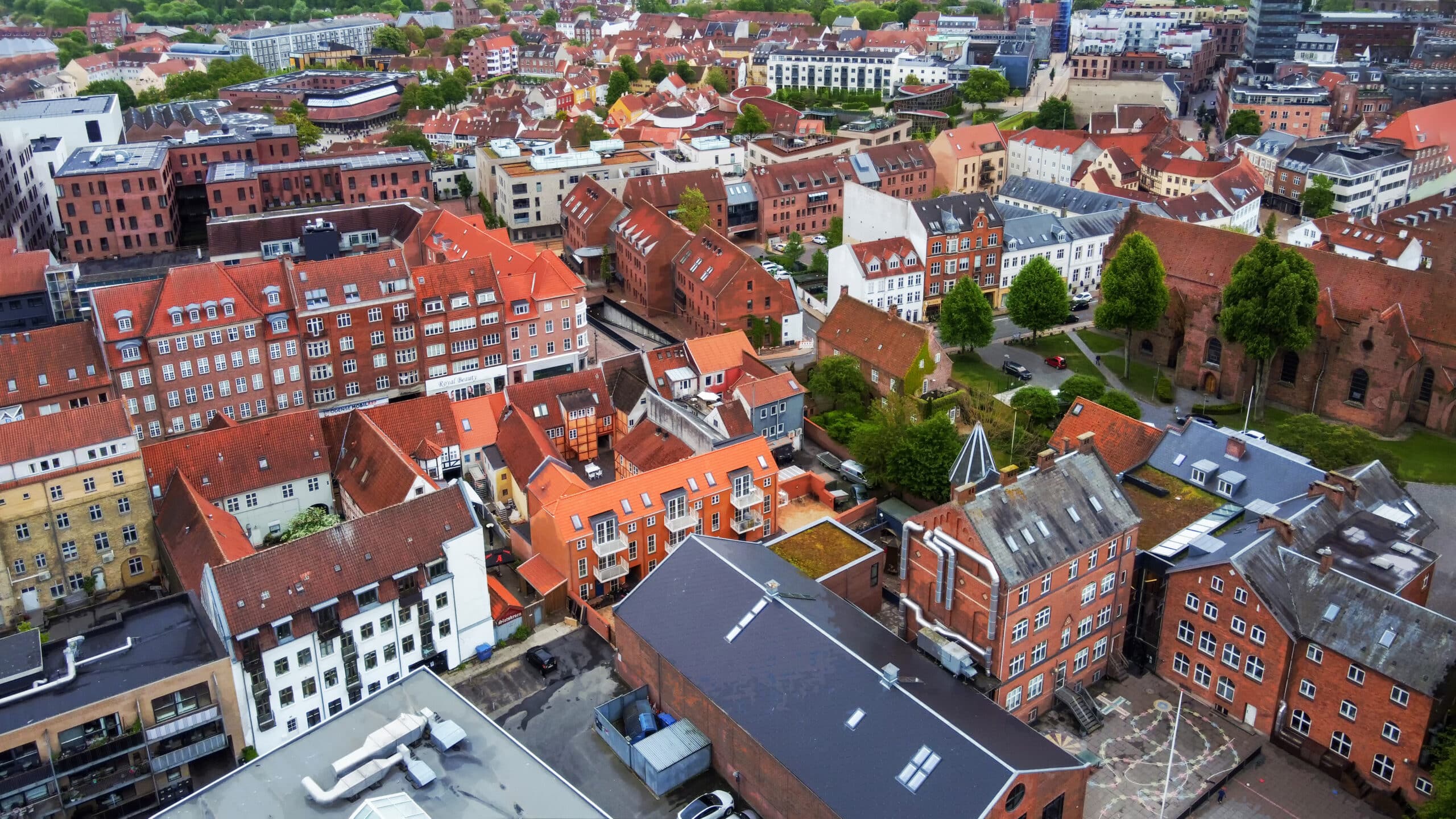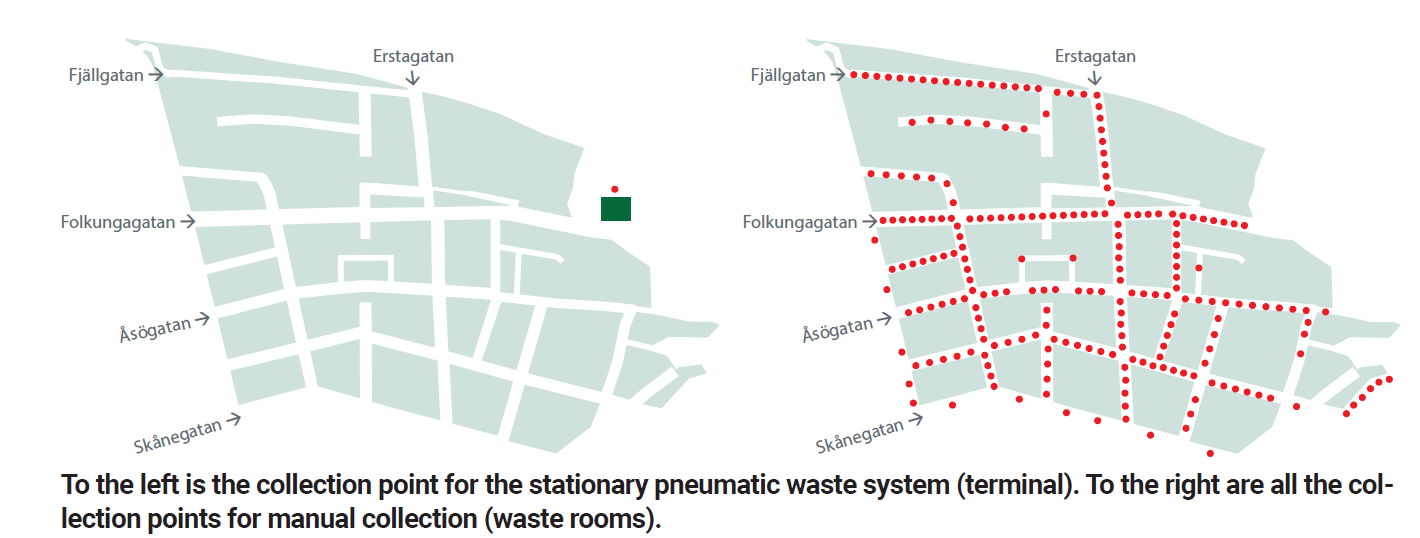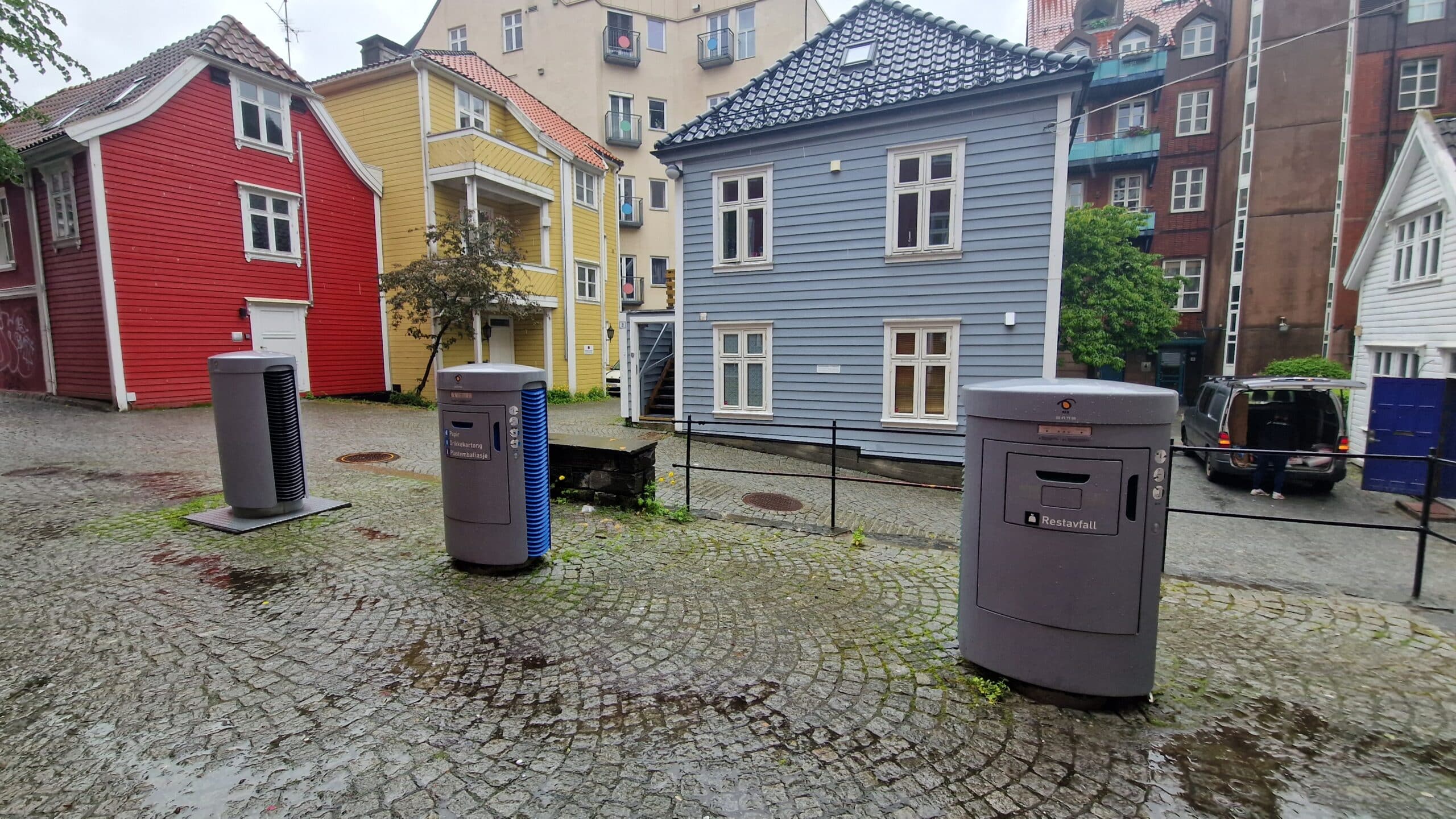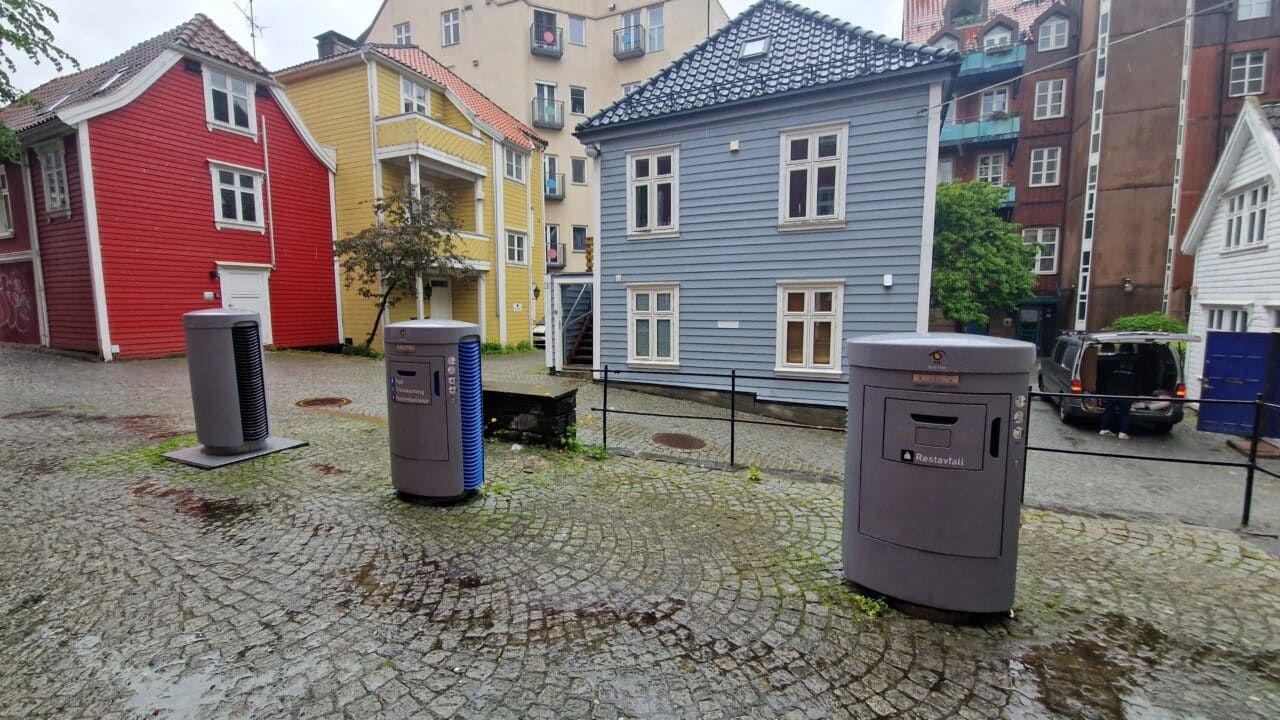A common misconception about automated waste collection systems (AWCS) is that they are only viable for new developments. However, studies as well as real projects, including cities such as Bergen, Odense and Barcelona, show that retrofitting existing neighbourhoods with pneumatic systems is both feasible and beneficial. As detailed in the Vinnova report on Stockholm’s inner city (Norra Sofia), Envac’s technology could not only improve operational efficiency but also transform the urban environment for the better.
Many believe retrofitting AWCS into existing areas is impossible but places like Bergen and Odense proves otherwise. The benefits are immediate: cleaner streets, quieter cities, and infrastructure ready for the future.
Niklas Karlsson, Regional CEO, Envac

Technical Integration in Built Environments
The key to retrofitting AWCS in existing areas lies in smart infrastructure planning. The system developed by Envac offers compact pipe diameters, local waste compaction at inlets, and flexible inlet placement, often on public pavements or courtyards. This dramatically reduces the need for intrusive interior alterations and allows property owners to repurpose existing waste storage rooms into valuable real estate such as storage rooms, bicycle storage or commercial units.
In Norra Sofia, the Vinnova report concludes that reusing this freed space could save the equivalent of over 50 new flats of 25 m² each. Bergen’s implementation also showcases how minimal disruption during installation, thanks to trenchless techniques and modular system design, can make retrofit projects manageable even in historically sensitive zones.
Urban and Environmental Benefits
Replacing lorry-based manual collection with a terminal-based pneumatic system has direct urban benefits. In Norra Sofia, the report concludes that a switch to AWCS could reduce weekly waste collection driving time from 60 hours to just 2 hours, drastically lowering particulate emissions and noise. The Bergen case reinforced this, highlighting a reduction in inner-city waste lorry traffic, which had previously disrupted pedestrian zones and posed traffic hazards.
A life cycle analysis (LCA) from the Norra Sofia study revealed that while overall greenhouse gas emissions from both systems were similar, the pneumatic system emitted only a fraction of the particulate matter—an increasingly critical factor for public health in dense cities.

Safety and Resilience
Climate resilience and operational continuity are also critical factors. Unlike manual systems that are highly weather-dependent, pneumatic systems operate continuously, even in extreme conditions. After Hurricane Sandy, the 40-year-old Envac system on Roosevelt Island in New York continued functioning while all manual collection ceased. Bergen’s AWCS was also introduced partly to mitigate fire risks and reduce urban clutter, risks that manual storage solutions could not address adequately.
Enhancing Recycling in Existing Neighbourhoods
Optical sorting is another technology that enables flexible, large-scale recycling without the need to expand waste management infrastructure. By using colour-coded bags for food waste, plastics, metals, and more, cities can increase recycling rates while reducing the need for additional physical collection bins.
Financing and Governance Models
Municipal involvement is a cornerstone of successful retrofits. Both the Bergen project and Stockholm’s Norra Sofia study underscore the importance of having a municipal authority as system owner and coordinator. The Vinnova report outlines several financing options, including public-private partnerships, municipal investments, and long-term cost recovery through waste tariffs rather than upfront developer fees. This stable governance ensures sustained operation, maintenance, and expansion. It also facilitates cross-property collaboration, particularly where space or access constraints prevent each building from hosting its own inlet.
Proven Retrofits: Bergen, Norway
In Bergen, Norway, a historic city with a compact and challenging urban layout, Envac successfully installed a stationary pneumatic system that now serves 30,000 residents. The main drivers for the installation were public health, safety, and environmental concerns—particularly the fire risks associated with traditional bin-based waste storage in confined inner-city courtyards. Bergen’s system minimised these risks while maintaining the city’s aesthetic and functional integrity.
A key ingredient in Bergen’s success has been the seamless coordination between utility providers. When one operator needs to dig for servicing, repairs, or pipe maintenance, all others are promptly informed. This collaborative approach minimises disruption, reduces costs, and ensures that the city’s underground infrastructure remains in peak condition.
Similarly, the Vinnova-supported study in Norra Sofia, a dense neighbourhood in Stockholm, revealed that a stationary sopsug (pneumatic system) is not only technically and economically feasible but also preferable to upgrading manual collection systems. Installation plans used existing public pavements and identified sufficient underground routing options for pipes—even in tightly built environments.

Retrofitting an automated waste collection system into an existing city is not just a technical upgrade, it’s an investment in cleaner streets, safer neighbourhoods, and a more liveable urban future. Bergen proves that with smart planning and collaboration, even the most historic and compact cities can embrace modern, sustainable waste solutions without losing their character.
Simen Tvedt Engen, Regional Product Manager, Envac
Conclusion: A Mature Technology Ready for Broader Adoption
As urban areas strive for climate adaptation, liveability, and operational efficiency, AWCS retrofitting emerges as a robust solution. Bergen provides real-world proof that such systems can be seamlessly integrated into even the most constrained environments, as recently highlighted in both The Washington Post and the World Economic Forum.
The Vinnova report concludes that installing a stationary pneumatic waste collection system in cities, like central Stockholm, not only meets technical and economic requirements but outperforms manual systems in nearly all sustainability metrics—including urban vibrancy, safety, and environmental impact.
Key takeaways for retrofitting AWCS in existing areas
- Proven feasibility: Retrofitting AWCS into dense, historic cities is both technically and economically viable.
- Tangible benefits: Cleaner streets, reduced traffic, lower emissions, and reclaimed valuable urban space.
- Long-term resilience: Reliable operation in all weather conditions with governance models that ensure sustainability.


